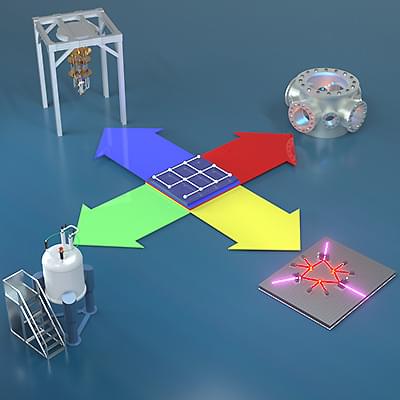
Quantum computers may be now able to employ a “call-a-friend” tactic to make sure their answers are correct.
In a study published today in Physical Review X, a team of physicists from Vienna, Innsbruck, Oxford, and Singapore designed an error-correction method that lets quantum computers check each other’s answers. While quantum computers are advancing quickly, the devices are still extremely sensitive to outside influences — like heat and cosmic rays — that make them more prone to errors that affect their computations, according to the researchers.
“In order to take full advantage of future quantum computers for critical calculations we need a way to ensure the output is correct, even if we cannot perform the calculation in question by other means,” said Chiara Greganti, a physicist at the University of Vienna.









